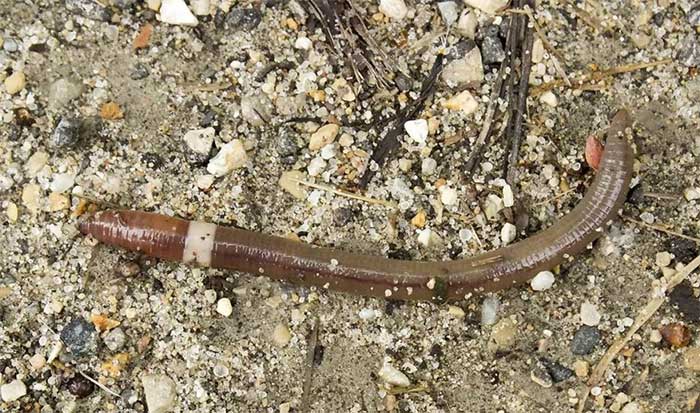They look like ordinary earthworms, but they can squirm, jump, and even shed their tails to escape danger.
Some people refer to them as “crazy worms,” and currently, scientists are finding them spreading to at least 15 states across the United States.
Josef Görres, a soil scientist at the University of Vermont, has described the issue of “crazy worms” as “a dangerous invasion” for animals and plants, particularly for the sugar maple trees in the Northeastern United States.

This is an invasive species that first arrived in North America in the 19th century, stowed away on ships carrying plants.
“People often think earthworms are beneficial. But for the forests of North America, they can have significant negative impacts,” Görres emphasized.
The worms belong to the genus Amynthas — also known as jumping worms, crazy worms, or Alabama worms, according to Smithsonian Magazine. They thrive on breaking down layers of decomposing leaf litter and nutrients on the forest floor. This can cause substantial harm to forests, including to the sugar maple trees. They are an invasive species that first arrived in North America in the 19th century, hidden on ships that transported plants. Since then, they have spread rapidly and have now been spotted in over a dozen states, including Minnesota, Wisconsin, Missouri, Illinois, Iowa, Nebraska, Ohio, Texas, Louisiana, Indiana, Kansas, Kentucky, Tennessee, and Oklahoma.
Where does the name “crazy worm” come from?
“They are truly extremely hyperactive worms that enjoy jumping, wriggling, and twisting constantly. That’s where the name ‘crazy worm’ comes from,” Görres shared, adding that crazy worms can even leap into the air thanks to their vigorous twisting.
Additionally, crazy worms have the ability to shed their tails like a lizard for self-defense. Once a crazy worm has shed its tail, it cannot regenerate a new one. This is akin to a “one-time escape” mechanism of the “crazy worm.”
“When you witness that moment, it’s quite crazy. It’s a one-time self-defense tactic to confuse predators like a bird. When they sense danger, crazy worms will shed their tails. The tail continues to thrash around as if to say, ‘I am the worm, grab me,’” Görres described.

A ‘crazy worm’ discovered in Wisconsin.
They resemble ordinary earthworms, just smaller and slightly brown, but they are harmful to the soil. According to Smithsonian, adult crazy worms reproduce quickly and without mates, laying egg masses that resemble soil. When these hatch, they quickly consume nutrients in the surrounding topsoil, leaving behind a rough, clumpy mess resembling coffee grounds.
Scientists believe that these earthworms not only change soil structure and nutrient dynamics but also replace other native earthworm species in their habitat.
Jumping worms consume the leaf litter, altering soil moisture and preventing seeds from germinating, particularly those of sugar maples, oaks, red oaks, and birches. The California Department of Food and Agriculture (CDFA) warns that these voracious worms can devour thick layers of organic matter within 2 to 5 years.
It is unclear how these worms continue to spread across the U.S. According to a January 2020 article in The Atlantic, scientists believe these worms can travel from state borders to import facilities by hitching rides on truck tire treads or even by boat, where they can move astonishing distances underwater.
Researchers are still investigating the long-term impacts of this worm species on North American forests, but in the short term, it is clear they are detrimental to the soil and native worm species. Authorities in 15 U.S. states have concluded that the invasion of crazy worms poses a significant threat to the native environment and have sounded the alarm regarding their spread.
American experts acknowledge that they have yet to find any specific measures to curb the spread of jumping worms nationwide. They have offered some recommendations, such as pouring a mixture of water and yellow mustard seed onto the soil or using clear polyethylene sheeting over moist soil for two to three weeks until soil temperatures exceed 40°C to kill the worm eggs. Another method is to place the worms in a bag, leave them in the sun for 10 minutes, and then dispose of them.




















































